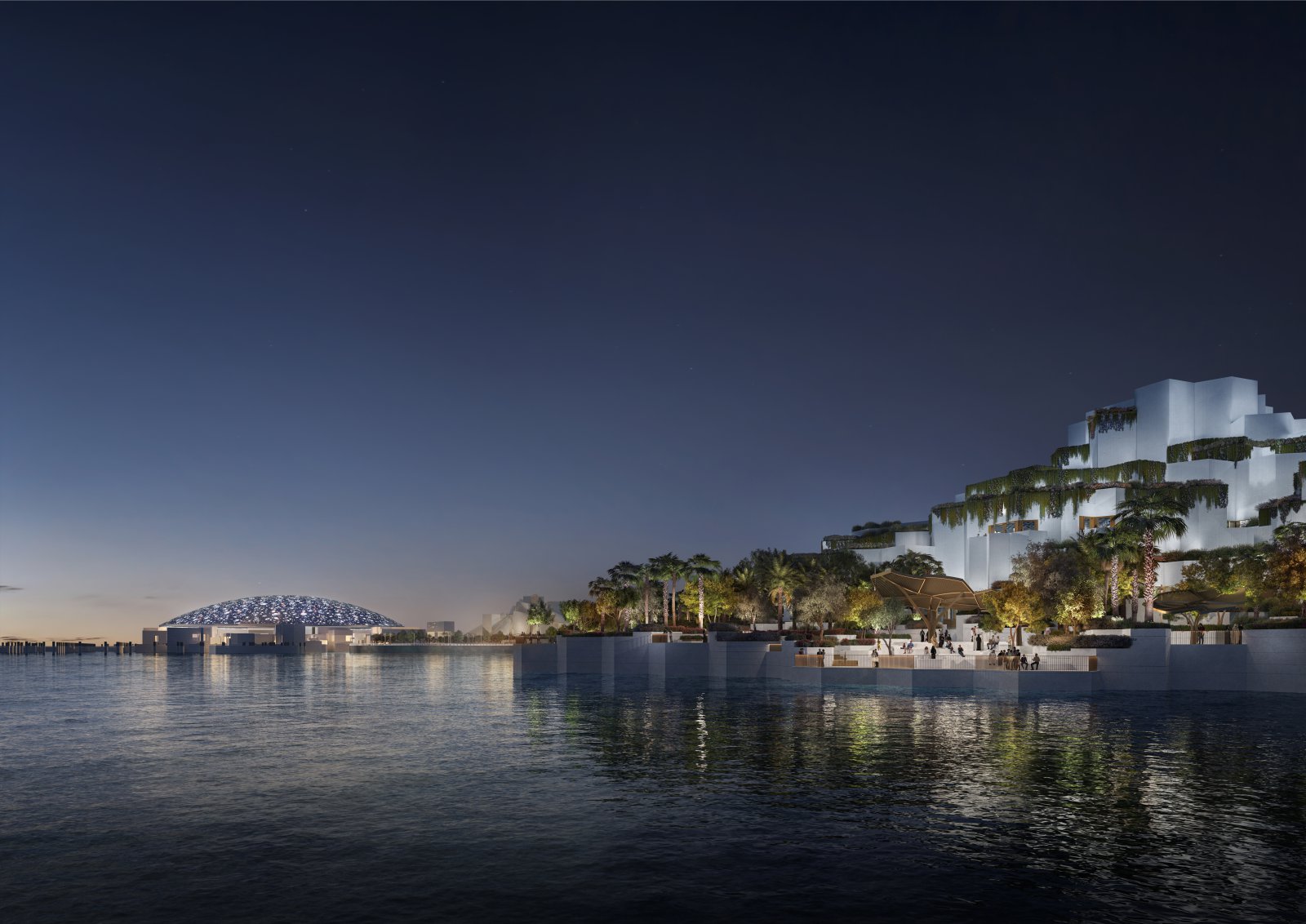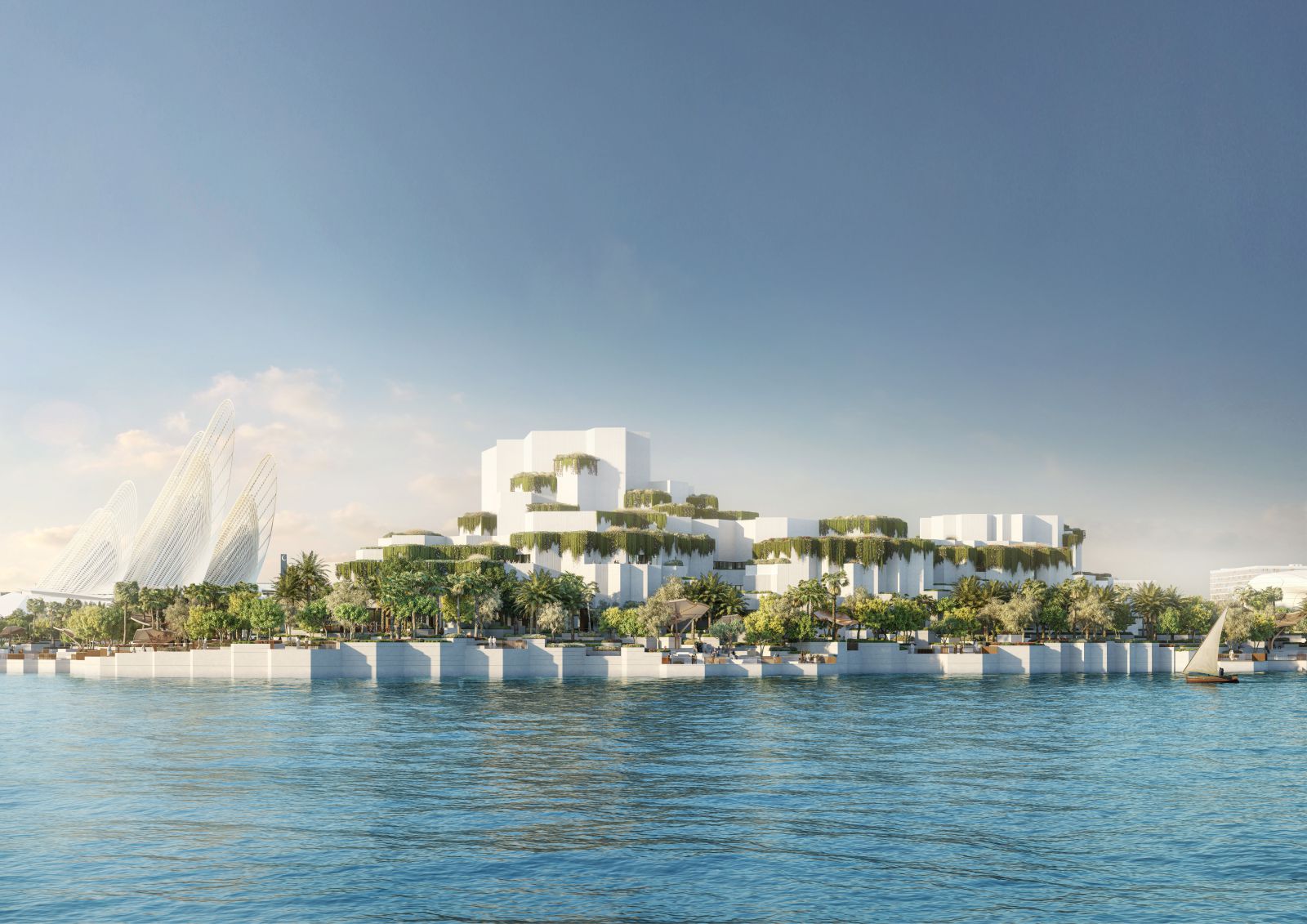Abu Dhabi unveiled plans for the Natural History Museum Abu Dhabi, which will feature some of the rarest wonders of natural history ever found. Visitors will travel on a 13.8-billion-year journey through time and space, which will include a thought-provoking perspective into a sustainable future for planet Earth.
The new museum, currently under construction and due to be completed at the end of 2025, will be located in the emirate’s Saadiyat Cultural District, which is establishing itself as one of the world’s leading cultural centres. Covering an area of more than 35,000 sqm, lead architects Mecanoo designed the Natural History Museum Abu Dhabi to resonate with natural rock formations, reflecting the museum’s goal of improving understanding of and engagement with the natural world.

Every element of the design uses geometry as an overriding theme, with pentagonal shapes resembling cellular structures. Also playing an important role in the design are water and vegetation, potent symbols of life in the desert. In addition to the gallery display areas, the museum will include temporary exhibition spaces for special events and theatre facilities. Enabling and marine works have commenced on the Natural History Museum Abu Dhabi construction site.
A highlight of the new museum’s collection will be the world-famous ‘Stan’, a remarkable, mostly complete 39-foot-long (11.7 metres) Tyrannosaurus rex, which is one of the best preserved and most studied fossils of this iconic predator from the Late Cretaceous Period. Known by scientists around the world, years of scientific studies of ‘Stan’ have furthered our knowledge of countless aspects of T. rex.

Now that ‘Stan’ has a new home at the Natural History Museum Abu Dhabi, this 67-million-year-old dinosaur will be in the care of expert scientists, and will continue to contribute to education and research and inspire future explorers. ‘Stan’ will be joined by an extraordinary Murchison Meteorite specimen, which famously crash-landed in Australia more than 40 years ago and has since revealed to scientists new information about the early solar system.
Containing a huge range of organic ‘stardust’ compounds as well as pre-solar grains which formed over 7 billion years ago – long before our current solar system existed – the meteorite provides ancient insight into the very building blocks of life. The museum’s collection will feature numerous significant artefacts as part of its curatorial vision, as well as fascinating experiences being created by a dedicated team in Abu Dhabi, supported by strategic partnerships with world leading scholars and natural history experts.

The Natural History Museum Abu Dhabi will be a scientific research and teaching institution and an educational resource for learning about the evolving story of our planet, aiming to ignite a life-long passion for the natural world in visitors of all ages. The museum will join the diverse cultural institutions and museums in the Saadiyat Cultural District, which include Louvre Abu Dhabi and the upcoming Zayed National Museum and Guggenheim Abu Dhabi.
With a focus on immersive displays, curated collections with exceptional specimens, and innovative, interactive mediations, the Natural History Museum Abu Dhabi galleries will take visitors on a journey back to the very beginning of time, narrating the evolution of our universe, the Earth’s formation, and the history of life on our planet – as well as providing a glimpse into our possible future.

In addition to global natural history, the Natural History Museum Abu Dhabi will for the first time present the history of life on Earth through an Arabian lens, where local natural assets of fauna, flora and the geological history of the region will be part of the visitor journey. It will join a global community of natural history museums committed to public education and to the development and sharing of scientific research.
Within the museum, the innovative scientific research facility will undertake studies in areas including zoology, palaeontology, marine biology, molecular research (aDNA and proteomics), and earth sciences. The primary aim will be to advance knowledge and increase understanding of our past, but also to create a think tank for future innovation and emerging technologies. Source and images Courtesy of Mecanoo.

